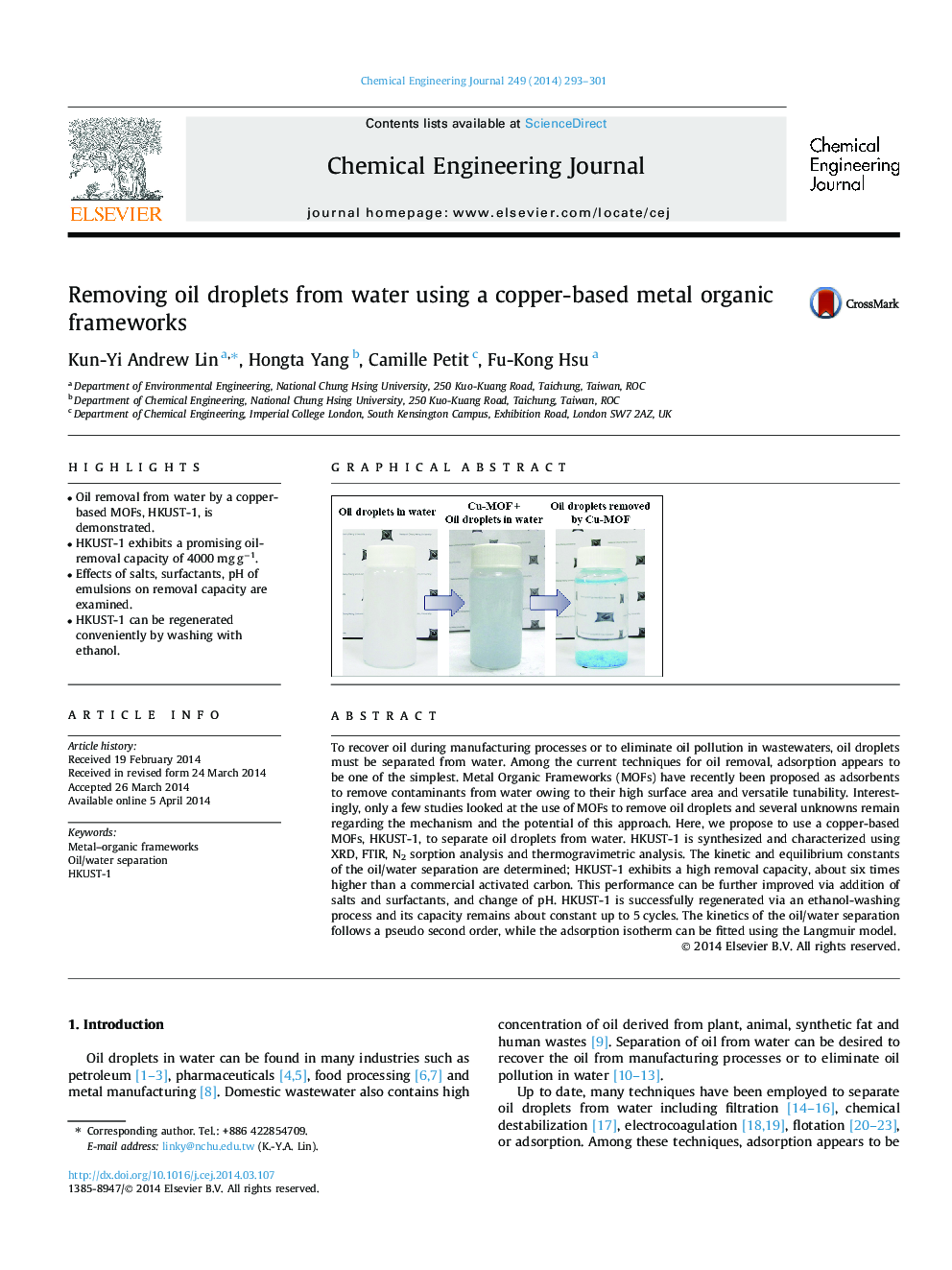| Article ID | Journal | Published Year | Pages | File Type |
|---|---|---|---|---|
| 147413 | Chemical Engineering Journal | 2014 | 9 Pages |
•Oil removal from water by a copper-based MOFs, HKUST-1, is demonstrated.•HKUST-1 exhibits a promising oil-removal capacity of 4000 mg g−1.•Effects of salts, surfactants, pH of emulsions on removal capacity are examined.•HKUST-1 can be regenerated conveniently by washing with ethanol.
To recover oil during manufacturing processes or to eliminate oil pollution in wastewaters, oil droplets must be separated from water. Among the current techniques for oil removal, adsorption appears to be one of the simplest. Metal Organic Frameworks (MOFs) have recently been proposed as adsorbents to remove contaminants from water owing to their high surface area and versatile tunability. Interestingly, only a few studies looked at the use of MOFs to remove oil droplets and several unknowns remain regarding the mechanism and the potential of this approach. Here, we propose to use a copper-based MOFs, HKUST-1, to separate oil droplets from water. HKUST-1 is synthesized and characterized using XRD, FTIR, N2 sorption analysis and thermogravimetric analysis. The kinetic and equilibrium constants of the oil/water separation are determined; HKUST-1 exhibits a high removal capacity, about six times higher than a commercial activated carbon. This performance can be further improved via addition of salts and surfactants, and change of pH. HKUST-1 is successfully regenerated via an ethanol-washing process and its capacity remains about constant up to 5 cycles. The kinetics of the oil/water separation follows a pseudo second order, while the adsorption isotherm can be fitted using the Langmuir model.
Graphical abstractFigure optionsDownload full-size imageDownload as PowerPoint slide
